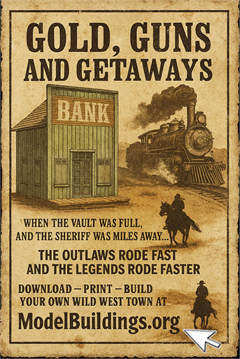Everything on model trains, model railroads, model railways, locomotives, model train layouts, scenery, wiring, DCC and more. Enjoy the world's best hobby... model railroading!
Joining Drop Wires
Alister asks readers:
“I saw a demonstration of joining a drop wire to a buss. The buss was blue and appeared to be insulated. The guy had a plastic joiner which clamped the drop wire to the buss without removing the insulation on the buss line ( no soldering was needed). How does this work? I was told the buss wires for the different rails were best to be different colors so that there was no confusion when joining drop wires. For the buss lines to be different colors they will be insulated. How can contact be made through the insulation? Thank you.”
7 Responses to Joining Drop Wires
Leave a Reply















On the ‘plastic’ wire joiner – there is a metal sort of m shaped metal that clamps through the insulation on the wires to join them and make continuity. I used color wire (one color for + and one color for – )to avoid any confusion or hooking up the wiring wrong and I solder all wiring connections to make a perfect connection for electricity to flow. I have used the ‘plastic’ wire connectors in automotive use as a temp emergency use and solder when I get a chance to avoid any possible problems. Hope this helps. enjoy your layout . – . I do mine.
These are “suitcase” connectors, and aren’t cheap. They work by using pliers to clamp them shut, when shut metal prongs pierce the insulation and make the electrical connection. They do work!
Yes, please do use different coloured wires for the + and – of your bus wires
Try buying “suitcase” connectors at your local flea market. I get a bag of 25 for the price of 10 from a hardware store. Suitcase connectors are easier than trying to solder wiring above your head under a layout.
Alister, Yes color coding is the best way so when adding on or troube shooting your wiring following a color coded wire is much easier that one that changes colors. But when wire is not always available color changes can happen. the wire drops do not have to be the same color but if you are chasing a wiring problem the track next to it should have a different color code. That rally helps when you look at the rails and know what color that attaches to the rails and when you get under the layout upside down you will be following the right wires.
Now your connectors. I have used soldiering and electric tape, I have used phone beanies that you squeeze on the wires when putting them in the connector ends, The kind you were talking about actually squeezes a clip onto the wire and locks on. (Most if needing to break the connection to make changes the connector usually has to be cut off.) So always leave some extra wire to allow for changes later. I personally prefer soldiering the connection and either taping the wire or using the liquid insulation stuff you can get at Menards. If you are connecting buss wires to more Buss wires I usually use electrical B-Nuts for the size of the wires. If needing to disconnecting them later just untwist the B-NUT and make your changes
from Newman Atkinson
Yes, these are what are known in industry as “insulation displacement” connectors. They work by having a pin penetrate the wire insulation (which is plastic), and embed in the metal wire conductor. We use the same technology in industrial control systems and it tends to be rather reliable. It is generally single-use, though.
The first type of Ethernet used in computer networking used insulation displacement technology.
Yes Rich I kind of knew that (how the connectors work) but never knew terminology that went with them. Interesting Newman Atkinson
These are “suitcase” or “scotchlock” connectors. Their advantage is being fairly quick and easy to apply (crimped on with ordinary pliers) without stripping the bus wire insulation, as they bite through it to contact the conductors. (Image below.)
They can be removed and re-used, but it is a fiddly and awkward to do. Personally I feel that stripping and soldering is better, although a little more work.
Although DCC uses an AC power voltage, the two wires must not be mixed up, or short circuits and fuses blowing and cut-outs popping will result ! So use two different colours.